
6 minute read
CMA CGM Jacques Saade
2020
SHIPPING & PORT ANNUAL
Advertisement
CMA CGM JACQUES SAADE This ship is Big: 400 m long x 61 m wide x 78 m high Thi hi i Bi 400 l 61 id 78 hi h
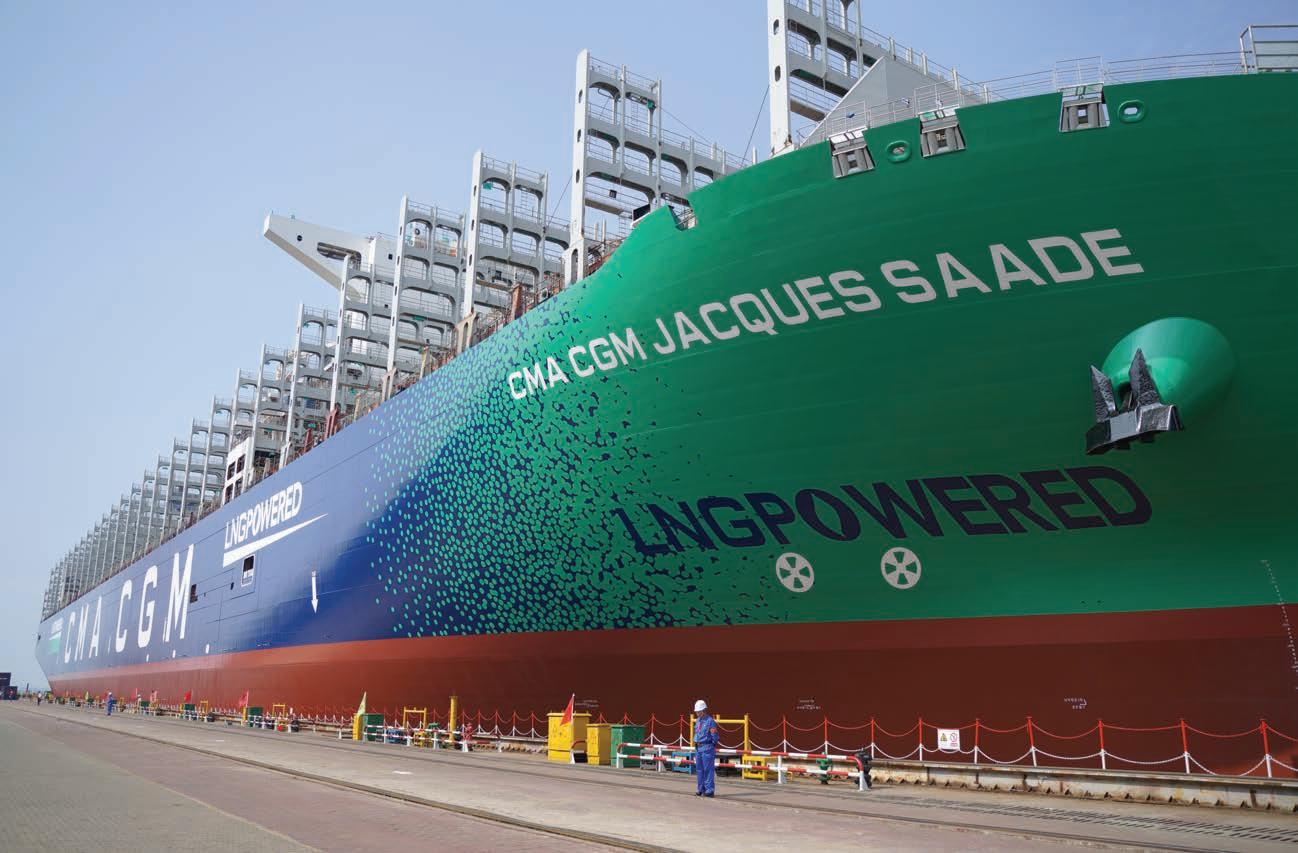

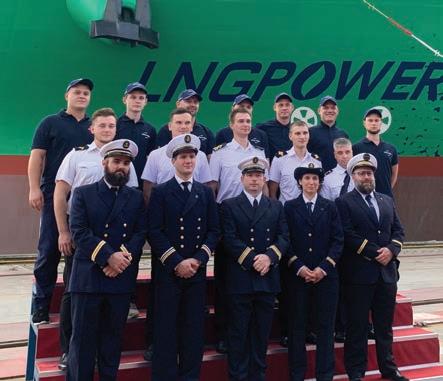
By any measurement, literal or metaphorical, the CMA CGM Jacques Saade is ‘Big.’ The ship recently joined the CMA CGM fl eet, an innovative ship on multiple levels that has garnered global attention as the fi rst 23,000-TEU containership in the world to be powered by liquefi ed natural gas (LNG). This is the fi rst of a series of nine 23,000 TEU container ships for the French containershipping legend, named after the founder of CMA CGM, Jacques Saadé.
In traditional form CMA CGM Jacques Saade joined the fl eet via naming ceremony, albeit a naming ceremony with a COVID-19 twist: a fi rst-of-its-kind digital naming ceremony that saw the shipyard’s representatives in Shanghai and CMA CGM Group’s management in Marseille share an emotional landmark moment in their common history. Blessed by father Francis Fang, the vessel was then offi cially named by her Godmother, Tanya Saadé Zeenny, who wished the ship, the captain and its crew the best of luck on their future voyages with the traditional words “May God bless this ship and all who will sail on her.”
A full profi le of the ship will be featured in the December “Great Ships of 2020” edition of Maritime Reporter & Engineering News.
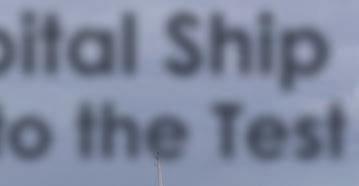

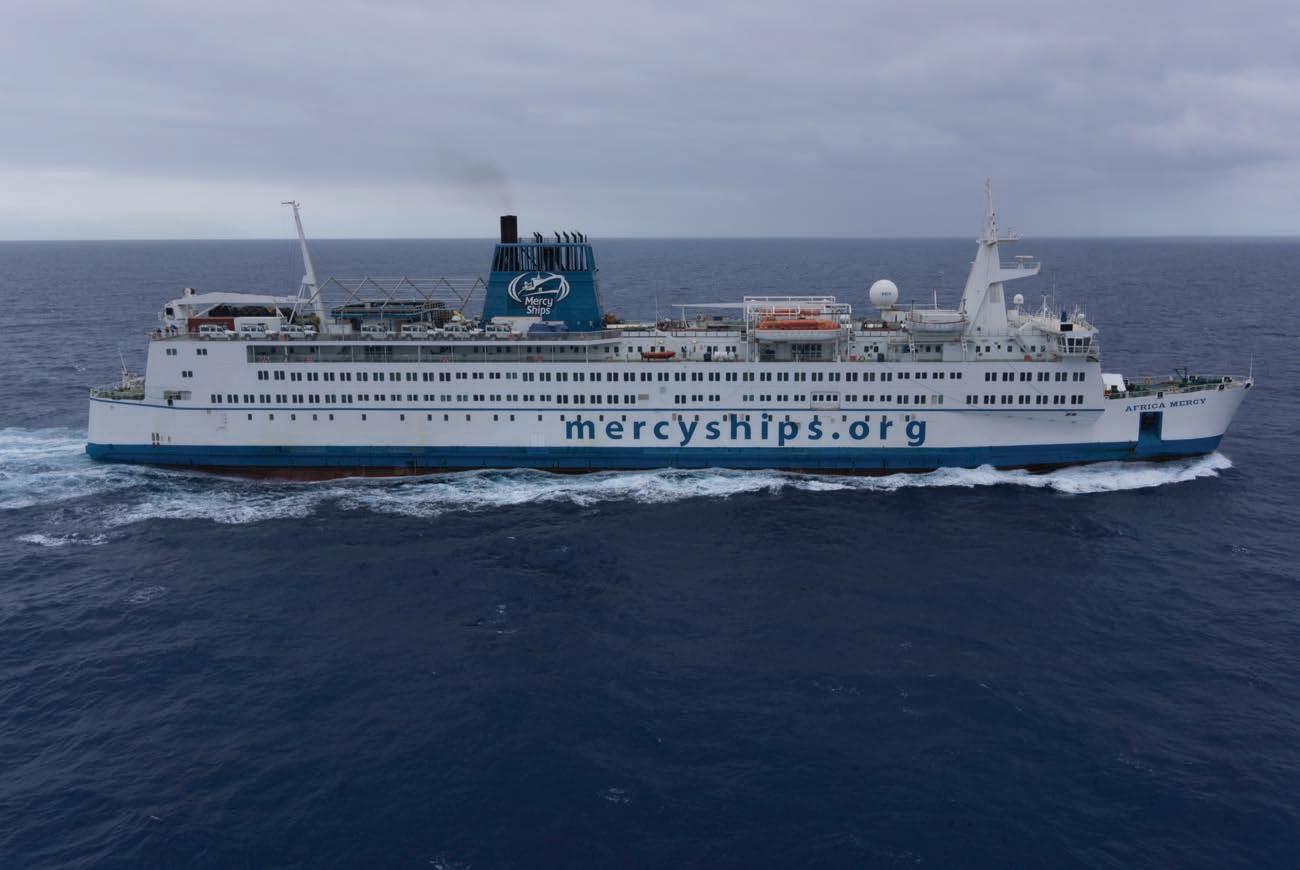
Mercy Ships Hospital Ship puts Mooring Lines to the Test
All Photos: Mercy Ships
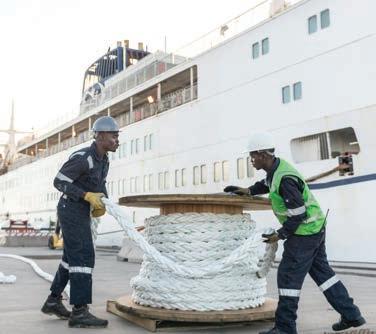

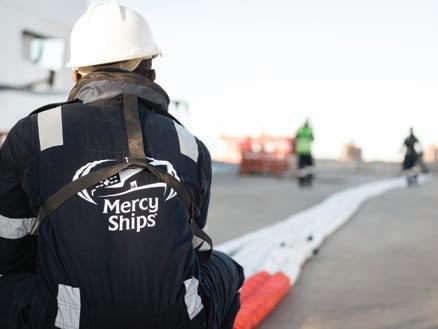
Phillystran has donated a full set of mooring lines to the Africa Mercy, the largest charity-run hospital ship in the world. Moored for more than 11 months of the year, the ropes will be subjected to relentless and demanding wind and tidal conditions in ports from Senegal to Madagascar. According to Djurre Jan Schutte, Master Mariner, Africa Mercy, “The conditions for Africa Mercy mooring lines are harsh. Where most vessel moorings are for a few days, the hospital ship can be moored for months in one place without the benefi t of modern winches to slacken and tension the lines automatically.”
The Africa Mercy is operated by Mercy Ships, an international nongovernmental, faith-based organization providing healthcare services to the world’s poorest countries. The hospital ship is dedicated to serving the people of sub-Saharan Africa. Mercy Ships serves countries that lie on the lower third of the World Health Organization’s (WHO) Human Development Index, where access to safe, affordable and timely surgery is extremely limited. As a result, countless people suffer and die from conditions that can easily be cured. The programs delivered by Mercy Ships offer holistic support to developing countries striving to make healthcare accessible for all. Since 1978, Mercy Ships has delivered services to more than 2.8 million direct benefi ciaries.
Phillystran Mooring Lines
Phillystran has donated four reels of Lankhorst Ropes’ Eurofl ex rope. Phillystran and Lankhorst Ropes are both part of the WireCo WorldGroup. The decision to donate the mooring ropes followed a chance meeting with a Mercy Ships representative at a maritime ex-
hibition. “When we heard about how Mercy Ships is changing lives among the world’s poorest, we felt the least we could do was to donate some mooring lines to the cause,” said Mark Pieter Frölich, Commercial Director for Lankhorst Ropes USA & Phillystran. “These high-performance mooring ropes will keep the Africa Mercy secured during their good work in West Africa.”
Secure mooring is important. “African ports present many port and weather challenges. The blazing African sun, in particular, causes ropes to deteriorate quickly,” said Ciaran Holden, Marine Operations Technical Director for Mercy Ships. “The stability of the vessel for surgical procedures and the comfort of our patients and crew is crucial for us to bring safe and successful medical care to people from nations like Senegal, Guinea, Cameroon, Benin and Madagascar.”
Well-equipped Hospital Ship
Formerly a Danish rail ferry, before an extensive refi t, the Africa Mercy contains fi ve operating rooms, a four-bed recovery area, intensive care for up to fi ve patients, and 80 ward beds. It carries about 400 volunteer crew members from up to 50 nations. Each year, over 2,000 free, life-changing surgeries are performed in the operating theatres onboard. Mooring the Africa Mercy safely and securely in a sub-Saharan African port is no small feat compared to mooring a regular vessel, according to Djurre Jan Schutte. “Even though the four-line mooring arrangement for the Africa Mercy has been changed for a more optimal mooring alongside the quay. The vessel was never designed to be moored side-on.”
As part of its train ferry legacy, the Africa Mercy uses capstans for the mooring lines rather than winches, the train ferry was originally moored with steel wire topes. The mooring lines are tightened with the capstans and secured using deck bitts.
Mooring Challenges
Mooring is a big challenge. As the vessel has to be securely moored to prevent excessive movement during surgical operations, the Africa Mercy is moored as tightly as possible during high tide, this means the load on the mooring line increases signifi cantly during low tide as the lines are stretched. “Mooring tightly at high tide and then letting the mooring lines slacken during low tide simply isn’t an option if we want to avoid excessive movement of the vessel,” says Djurre Jan Schutte. The mooring lines are regularly checked and retightened when needed with the changing of the tides. To protect the mooring lines from the UV effects of the sun we cover the reels and lines on board the vessel.”
Djurre Jan Schutte welcomes the new Eurofl ex mooring lines. Made of polyester and polypropylene composite yarns, they are better able to absorb the energy and tension-tension fatigue experienced by mooring lines as they tension and slacken with the tide and wind, than nylon mooring lines. Eurofl ex is also one of the few mooring lines to have been fully tested to the latest OCIMF’s Mooring Equipment Guidelines (MEG4). Although MEG4 applies primarily to oil and gas tankers, the guideline’s underlying principles of safety during mooring apply to all vessels, and probably more so to mooring the Africa Mercy.
As well as ease of handling and high strength, Eurofl ex has excellent abrasion resistance, which makes them ideal for mooring in Madagascar, for example, where there is considerable water movement which can cause a lot of chafi ng and wear on mooring lines. The Eurofl ex mooring lines were installed during the hospital ship’s recent annual maintenance in Tenerife, part of the Canary Islands. Even here the mooring lines are exposed to signifi cant loads arising from strong winds, typically wind force 5 but gusting up to wind force 8, as the Africa Mercy prepared for its next voyage.
“We are pleased to support the valuable work of Mercy Ships as part of one of the Phillystran and Lankhorst Ropes’ initiatives to contribute to the creation of a better world. During these diffi cult times, their services are needed more than ever,” said Mark Pieter Frölich, Commercial Director for Lankhorst Ropes USA & Phillystran.
ENDLESS SUPPLY OF MARINE HARDWARE
IN STOCK & READY TO SHIP WORLDWIDE 24/7











